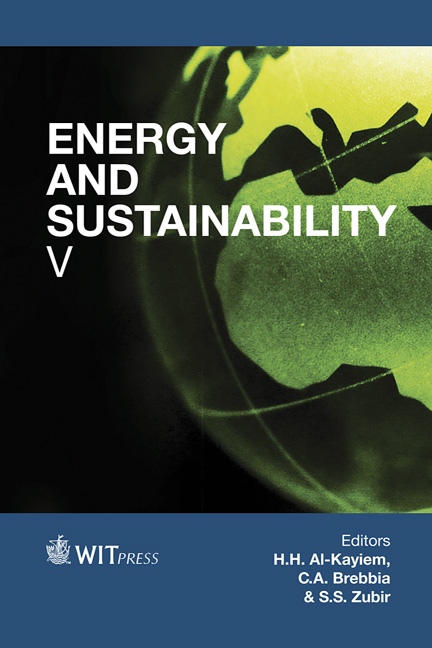A Framework To Evaluate The Energy Efficiency Potential Of Kuwaiti Homes
Price
Free (open access)
Transaction
Volume
186
Pages
14
Page Range
25 - 38
Published
2015
Size
455 kb
Paper DOI
10.2495/ESUS140031
Copyright
WIT Press
Author(s)
B. Jaffar, T. Oreszczyn, R. Raslan
Abstract
Energy demand and consumption rates in Kuwait are amongst the highest in the world. This is largely due to a substantial amount of waste and overconsumption of energy in the residential building sector which accounts for almost 60% of Kuwait’s national electrical power generated. In spite of the existence of an Energy Conservation Code of Practice for Buildings, homes in Kuwait continue to be designed and built with little consideration to their climate, consuming significant amounts of electricity. There is a universal dependence among households on air conditioning systems, artificial lighting, and electrical appliances. Rapidly rising consumption rates by this sector are presenting an increasingly critical challenge for the Kuwaiti government, which is struggling to satisfy existing power demands. This paper reviews and discusses the key characteristics of Kuwait’s residential sector, and proposes a framework to evaluate the energy efficiency potential of Kuwaiti homes in order to inform policy developments in this field. As there is a significant lack of data about the Kuwaiti housing stock (its building fabric, energy consuming equipment, and occupants’ demand for services), the proposed framework suggests that energy use in a number of Kuwaiti homes is first examined, via an investigative case study strategy, before developing a residential building stock model to evaluate the impact and potential of different efficiency measures.
Keywords
energy efficiency policy, residential building sector, building stock modelling, Kuwait





